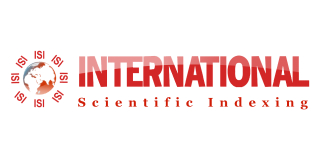Religious beliefs of persons who seek medical care is very often discussed in research circles to find out its impact or efficacy in the very healing process. The paper based on a masters level study in medical social work tries to explore the influence of religious background of the persons who seek medical care in different hospitals having a religious significance. The study is qualitative in nature and based on available literature and case studies try to explore the importance of religious beliefs and practices in choosing the type of hospitals for treatment. The study result shows significant correlation between the choice of the patient and religious orientation of the place of treatment at greater extent.
by :
Justin Raj, Prince CP
15 February 2020
:
Journal Articles
: Volume : Volume 6 Issue : Issues 1-February
Organisational climate is the human environment in which the employees work and it provides a favourable or unfavourable setting for Job satisfaction. This paper is a pre-research discussion based on available literature upon Organisational climate and Job satisfaction in the perspective of prospective study on Organizational climate in relation to Job satisfaction in the context of Catholic hospitals in the state of Kerala, India. The literature survey indicates a positive correlation between Organisational climate and Job satisfaction. However, the variables that determine the organisational climate in a Catholic hospital would be different from other private hospitals. Therefore, there could be remarkable variation in the Job satisfaction derived in such situation. The present study is following a mixed methodology as the quantitative data will provide correlation between the variables and qualitative data would help in objective analysis of subjective experience of the clients studied
by :
Johny P R, Pradeep V S
15 February 2020
:
Journal Articles
: Volume : Volume 6 Issue : Issues 1-February
The study examined the role and developmental support of animal husbandry programmes for the promotion of farmers in the rural areas of Kerala and revealed the dependence on their livelihood. Livestock includes cow, sheep, goat, buffalo and poultry. Majority of the farmers have only primary level education. Climate change, low availability of fodder and feed, disease and lack of veterinary services are the major problems. Absence of good access to market and unavailability of various incentives for improving the care and breeding of animals create lot of problems to farmers.
by :
Karunakaran N, Sareena M
15 February 2020
:
Journal Articles
: Volume : Volume 6 Issue : Issues 1-February
The etching is a process of modifying the flat smooth surface to identify the structure, phases, and other effects such as the orientation of grains, deformation and distribution of solute elements. Due to the chemical reaction between the etchant and the detector material, some molecules of the detectors are removed. The etchant used for LR-115 detectors in the present study is aqueous NaOH solution with 2.5 N. The bulk etch rate has been estimated by varying the etching time, keeping the etching temperature constant. It has seen that, the bulk etch rate remains almost constant during etching. The result indicates that, rate of chemical etching is uniform in different intervals of etching time. The average bulk etch rate obtained from experiments was in good agreement with the standard value obtained from earlier experiments.
by :
Nadira Mahamood K, Prakash V
15 February 2020
:
Journal Articles
: Volume : Volume 6 Issue : Issues 1-February
The present research measured The Total Factor Productivity (TFP) of productive resources used in homestead poultry broiler farms in Niger State of Nigeria, using structured questionnaire complemented with interview schedule to collect cross-sectional data from a drawn sample size of 97 active broiler producers via multi-stage sampling design. The data analysis was performed using descriptive and inferential statistics. Findings from the study showed evidence of productive labour force in the enterprise, literate farming population with sustainable household size typical of African agrarian setting. The enterprise was found to be profitable in the studied area. Furthermore, findings showed that marginally above the sampling population were productive in the utilization of their input resources which may be due to technical awareness of the modern poultry management techniques in the studied area. Thereafter, it was observed that gender status, experience, capital source and operational capital were the factors undermining farmers TFP. Therefore, study recommended gender sensitization and the need for public private partnership synergy to explore the untapped potentials in this sub-sector in the studied area as almost half of the farmers were found not to be productive in the utilization of their resources.
by :
Sadiq M S, Singh I P, Ahmad M M, Lawal M
15 August 2019
:
Journal Articles
: Volume : Volume 5 Issue : Issue 2- August 2019



